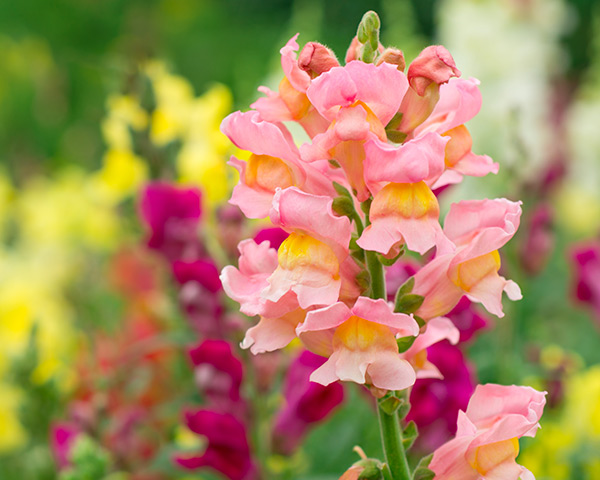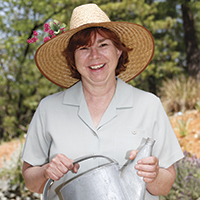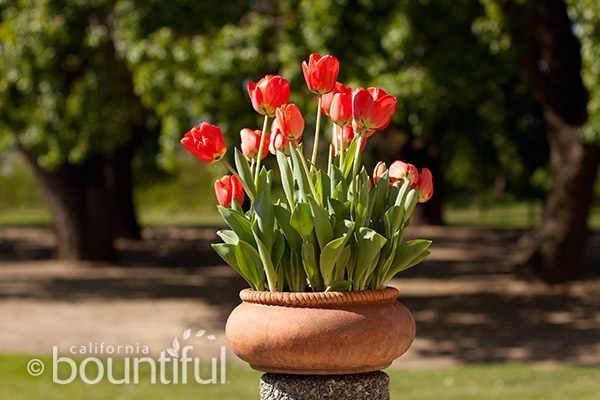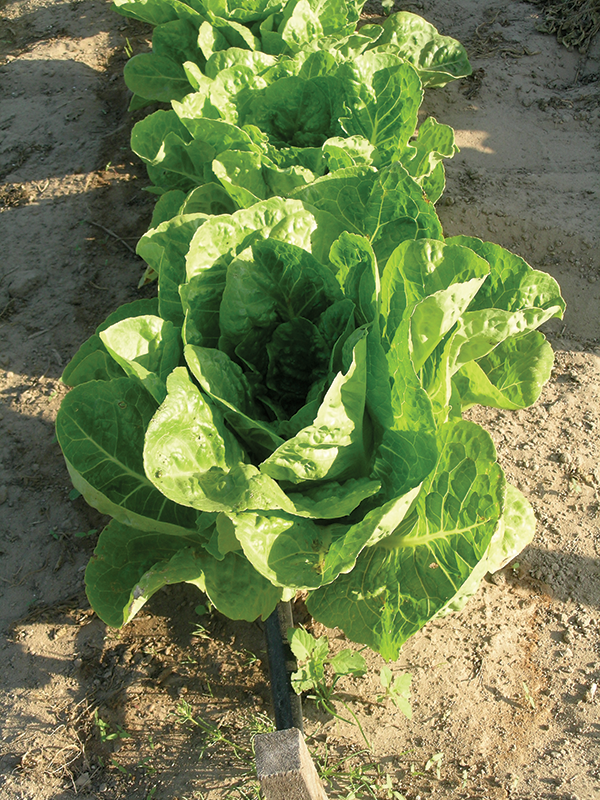Gardening Q&A
-

All my neighbors have beautiful snapdragons every spring, but by the time I plant them, I don't get nice blooms. Why?
In California, you need to get plants in the ground in November and December. They'll grow through our mostly mild winters and reward you with many stalks of blooms in the spring and early summer. Leave the flowers as they die back and they'll produce seed for a surprise batch of plants the following year.
When should I cut back my ornamental grasses? They look so beautiful in the fall and winter.
Timing is everything, and the plants will let you know when it's time for a haircut. The trick is to enjoy their beautiful golden hues all fall and winter, but cut them back before they start to fall apart—and definitely before new green shoots start to appear. I've let them go too long in the past and it's a messy, difficult job to get them cut and the garden cleaned up. Cut them back no later than the first week of January.
About Pat Rubin, California Bountiful's gardening expert

For Pat Rubin, gardening is more than just dirt and plants. "It's about history, romance, adventure and people," she says. "And it should be fun."
California Bountiful's gardening columnist has lived and chronicled this fun, hands-in-the-dirt approach for years—and for additional publications including Fine Gardening, Pacific Horticulture, Christian Science Monitor, Family Circle and The Sacramento Bee. Pat has also volunteered as a Master Gardener, speaks to garden clubs and appears regularly on gardening radio shows.
Need gardening advice? Ask the expert!
-

I have planted tulips for the past two years, but very few come up and I don't get many blooms. What am I doing wrong?
Except in the coldest parts of California, we simply don't have the right climate for tulips. It just isn't cold enough. The tulip bulbs you buy will bloom the first year, but very few will survive to grow and bloom again. To add insult to injury, gophers love tulip bulbs. I, too, planted masses of tulip bulbs one year, and the gophers missed only a handful. If you want tulips, buy new bulbs each spring and plant them in pots. I plant pots of tulips (make sure the flat part of the bulb faces outward, so the leaves curl out away from the pot—it makes for a prettier arrangement) and give them as hostess gifts when we visit friends.
My camellias are beginning to produce flower buds. Last winter when I attended a camellia show, I was surprised at how large the flowers were compared to mine. What varieties can I grow to get larger flowers?
The people who raise camellias for show thin the clusters of flower buds to one or two per cluster instead of the usual four or five, so the individual flowers can grow larger. Pinch away the two or three smallest buds in each cluster and you'll have larger, although fewer, flowers.
About Pat Rubin, California Bountiful's gardening expert

For Pat Rubin, gardening is more than just dirt and plants. "It's about history, romance, adventure and people," she says. "And it should be fun."
California Bountiful's gardening columnist has lived and chronicled this fun, hands-in-the-dirt approach for years—and for additional publications including Fine Gardening, Pacific Horticulture, Christian Science Monitor, Family Circle and The Sacramento Bee. Pat has also volunteered as a Master Gardener, speaks to garden clubs and appears regularly on gardening radio shows.
Need gardening advice? Ask the expert!
-

I've been growing lettuce and other greens with great success, and now suddenly all I get are flowers. Why?
Your greens are bolting. That means they are producing flowers instead of foliage because the weather is too hot for them and nature is telling the plant to produce seed as quickly as possible. Once the weather cools, you should be able to grow greens successfully again.
I want to build raised beds. How high should they be?
My raised beds are 12 inches high and placed directly on the ground. Some people make their raised beds even higher so they don't have to bend over so far, but the deeper ones need more soil to fill them.
About Pat Rubin, California Bountiful's gardening expert

Pat RubinFor Pat Rubin, gardening is more than just dirt and plants. "It's about history, romance, adventure and people," she says. "And it should be fun."
California Bountiful's gardening columnist has lived and chronicled this fun, hands-in-the-dirt approach for years—and for additional publications including Fine Gardening, Pacific Horticulture, Christian Science Monitor, Family Circle and The Sacramento Bee. Pat has also volunteered as a Master Gardener, speaks to garden clubs and appears regularly on gardening radio shows.
Need gardening advice? Ask the expert!
Send your questions to gardening@californiabountiful.com

